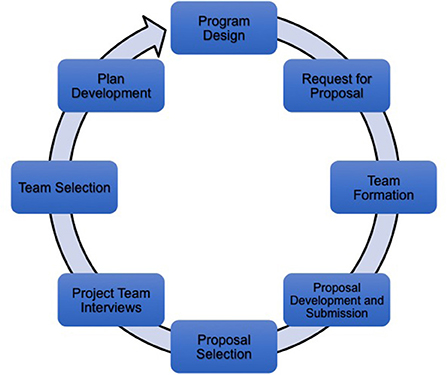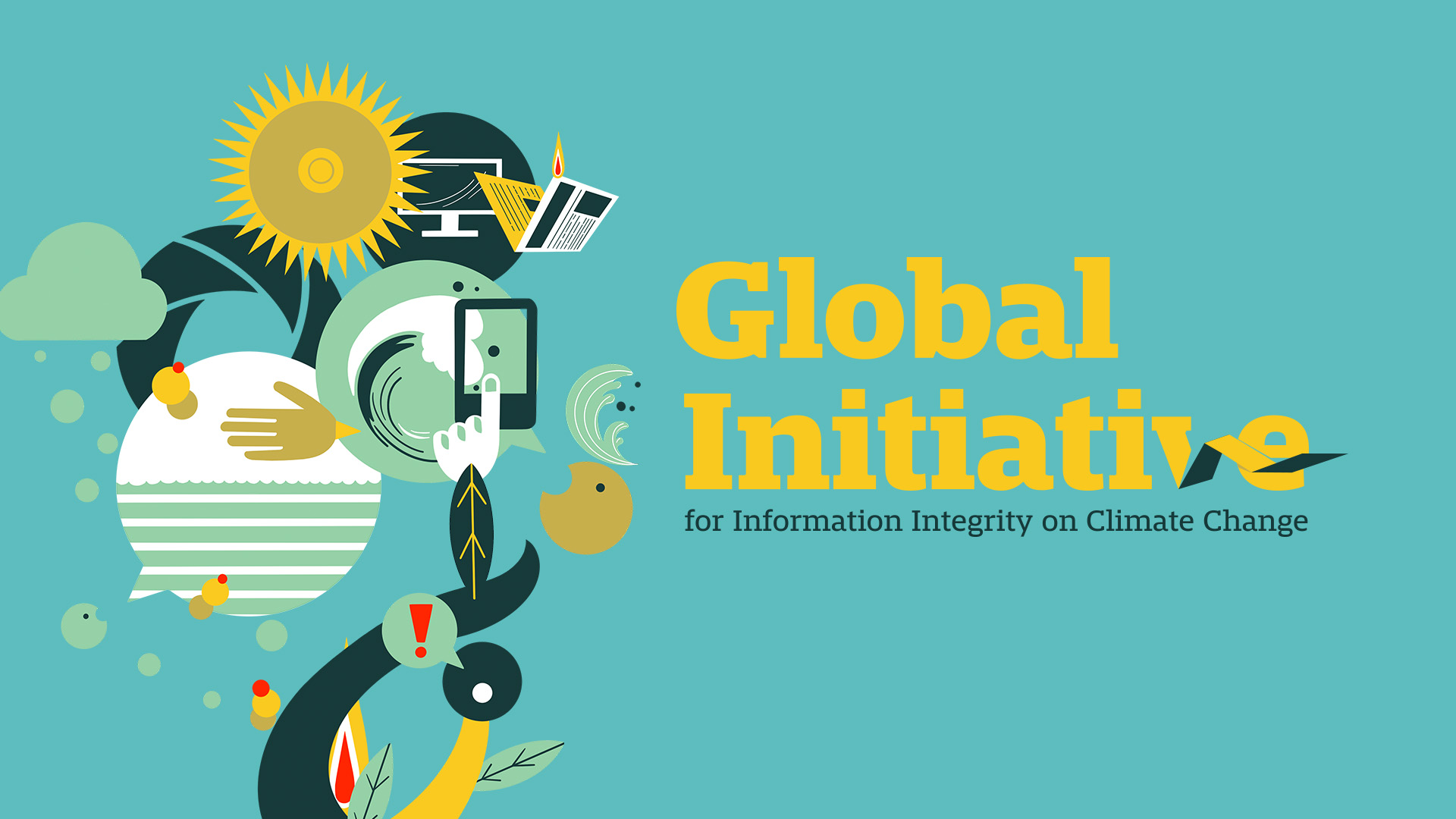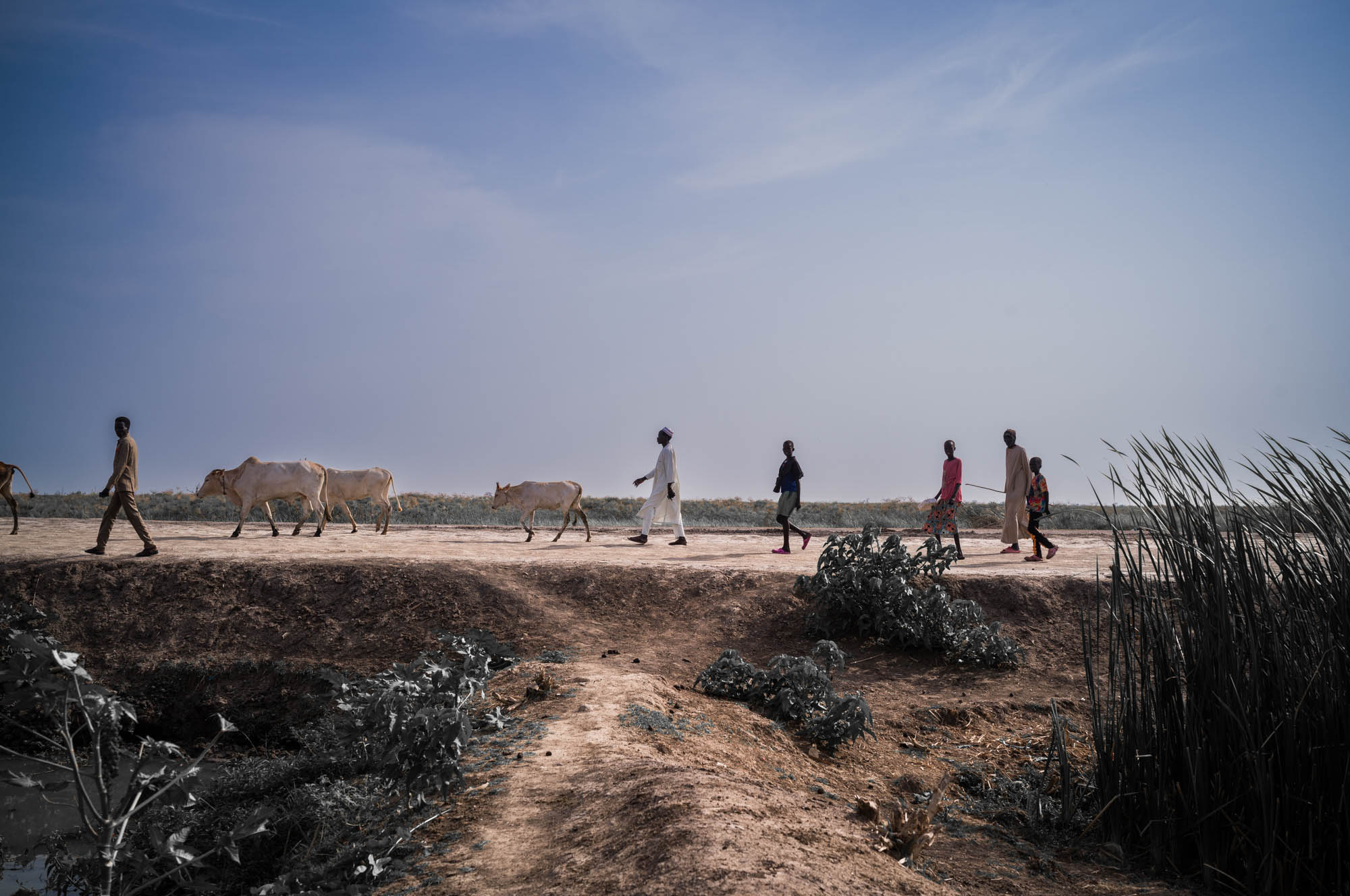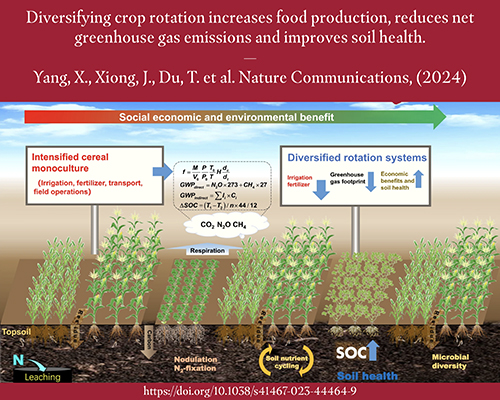Report on Mainstreaming Climate Change Adaptation for Sustainable Urban Development
The Imperative for Integrating Climate Action into Urban Policy
The integration of Climate Change Adaptation (CCA) into sectoral policies and plans is critical for achieving the Sustainable Development Goals (SDGs). Climate change is a cross-cutting issue that profoundly impacts urban systems, from infrastructure to land use, making its integration essential for sustainable development trajectories. A failure to mainstream CCA results in siloed strategies that undermine long-term resilience and threaten progress on SDG 11 (Sustainable Cities and Communities) and SDG 13 (Climate Action).
A significant disconnect persists between adaptation planning and urban development. For instance, while climate action plans may address future flood risks, this knowledge is often not integrated into land-use planning. This leads to the continued expansion of urban settlements into high-risk areas. Global data indicates that between 2000 and 2015, the population exposed to flooding increased by up to 24%, with millions settling in floodplains, particularly in rapidly urbanizing Asian cities. This trend directly contravenes the objectives of SDG 11.5, which aims to significantly reduce the number of people affected by disasters.
Challenges in the Global South and the SDG Agenda
The gap between policy and practice is particularly acute in the Global South, where cities face compounded risks from climate change and rapid, often unplanned, urbanization. This vulnerability directly impacts the poorest populations, hindering progress on SDG 1 (No Poverty) and SDG 10 (Reduced Inequalities). Case studies reveal a pattern of climate-insensitive development:
- In Ho Chi Minh City, industrial and residential growth continues in low-lying, flood-prone zones, despite projections of severe inundation from sea-level rise. Analysis shows that this planned urban expansion, rather than climate change itself, is the primary driver of new flood exposure.
- Jakarta’s urban development and coastal protection projects have also been criticized for failing to adequately integrate long-term climate risks.
These examples underscore a critical failure to embed CCA as a foundational principle in planning, thereby jeopardizing the creation of safe, resilient, and sustainable urban environments as mandated by the SDGs.
Analysis of Gaps in Mainstreaming Research and Practice
A review of existing literature reveals five key gaps that impede the effective mainstreaming of CCA and the achievement of SDG 13.2 (integrate climate change measures into national policies, strategies and planning).
- Conceptual Ambiguity: A lack of harmonized definitions and frameworks for “mainstreaming” creates confusion and hinders the operationalization and evaluation of integration processes.
- Lack of Actionable Guidance: While barriers to mainstreaming (e.g., lack of data, finance, political will) are well-documented, there is insufficient practical guidance on how to overcome them.
- Impractical Practitioner Manuals: Guidance from non-academic sources is often overly complex and poorly aligned with the practical needs and processes of urban planners.
- Geographical Research Bias: Empirical research is heavily concentrated in the Global North, limiting the transferability of findings to high-risk cities in the Global South where adaptive capacity is often lowest.
- Contested Value: A growing critique questions the effectiveness of mainstreaming, arguing it can depoliticize adaptation and may not always be the optimal approach compared to dedicated policies.
A Pragmatic Protocol for Mainstreaming Climate Change Adaptation
Foundational Principles for SDG Alignment
This report presents a pragmatic protocol developed to address these gaps. Mainstreaming is defined as a dynamic, multi-stakeholder process to integrate climate change risks into all existing policies, institutional frameworks, and decision-making structures. This approach aligns with SDG 16 (Peace, Justice and Strong Institutions) by promoting effective and inclusive governance, and SDG 17 (Partnerships for the Goals) by emphasizing collaboration. The protocol is designed as a user-friendly tool to help urban planners and policymakers translate policy into action.
The Four-Phase LIRLAP Mainstreaming Protocol
The protocol consists of four iterative phases, underpinned by the cross-cutting principles of monitoring, policy coherence, long-term vision, and participatory collaboration.
-
Policy Formulation
This initial phase focuses on establishing a common understanding and vision. Key activities include:
- Awareness Raising: Ensuring all stakeholders understand the issue and their roles, fostering collective commitment.
- Context and Gap Assessment: Analyzing existing formal and informal systems to identify gaps, redundancies, and mismatches. This provides an evidence base for action.
- Vision and Goal Setting: Collaboratively defining a clear, overarching goal and establishing a core team and cooperation structure, which supports the inclusive decision-making central to SDG 16.
-
Planning
This phase translates the vision into a concrete plan of action, directly addressing SDG 13.2. Key activities include:
- Prioritization: Ranking identified gaps and issues based on criteria like urgency and stakeholder needs to focus resources effectively.
- Integration Strategy: Deciding whether to integrate CCA into existing structures or create a dedicated plan, based on the context and potential for integration.
- Identifying Entry Points: Pinpointing opportunities within existing administrative, legislative, or institutional systems where change can be introduced effectively.
-
Resource Allocation
This phase focuses on assigning the necessary resources to implement the plan. Key activities include:
- Selecting Instruments: Identifying appropriate legal, financial, and capacity-building tools to drive change.
- Defining Roles and Responsibilities: Clearly assigning roles to actors and institutions to ensure accountability and long-term ownership, strengthening the effectiveness of institutions as per SDG 16.
-
Implementation
This final phase puts the plan into action and ensures its sustainability. Key activities include:
- Work Plan and Pilots: Developing a detailed work plan with timelines and responsibilities, and using pilot projects to test changes before scaling up.
- Capacity Building and Coordination: Ensuring all stakeholders have the necessary skills and establishing an oversight body to guide the process.
- Monitoring and Evaluation (M&E): Establishing or adapting M&E systems to track progress and assess both process and outcomes, which is crucial for the accountability framework of SDG 11.b.
Protocol Validation in Metro Manila: A Case Study
Context: Urban Vulnerability and Governance Challenges
The protocol’s applicability was validated in Metro Manila, Philippines, a region highly vulnerable to natural hazards and rapid urbanization. Persistent challenges in governing informal settlement upgrading and relocation as adaptation measures put progress towards SDG 1, SDG 11, and SDG 13 at risk. The validation process involved an online survey and a policy workshop with national and local government agencies, CSOs, and academic institutions.
User-Centered Evaluation and Key Findings
The evaluation yielded positive feedback, with users finding the protocol comprehensive and helpful for structuring planning processes. The workshop application demonstrated the protocol’s utility as a tool for fostering collaborative solutions (SDG 17) and strengthening institutional capacity (SDG 16). A key insight emerged from the process: the primary challenge in Metro Manila was not a lack of regulation but rather policy incoherence and administrative overload from an over-regulated environment. The protocol guided participants to identify the need for streamlining existing laws, mandates, and financial mechanisms, rather than creating new policies. This highlights the importance of policy coherence, a core principle of the 2030 Agenda for Sustainable Development.
Discussion: Bridging the Science-Practice Gap for Climate-Resilient Development
The absence of pragmatic, user-centered guidance has been a major barrier to implementing CCA, particularly in the Global South where SDG progress is most critical. This protocol helps bridge the gap between scientific knowledge and practical application. It moves beyond purely analytical frameworks to provide actionable steps that practitioners can use to navigate complex governance landscapes.
The Metro Manila case study confirmed the protocol’s value not only as a planning tool but also as a diagnostic instrument. It enabled stakeholders to identify systemic governance issues—specifically, policy incoherence—and collaboratively develop solutions tailored to their context. By facilitating such processes, the protocol can help overcome implementation barriers and advance the creation of climate-resilient urban development pathways.
Conclusion and Recommendations for Advancing the SDGs
The effective mainstreaming of Climate Change Adaptation is fundamental to achieving the vision of sustainable and resilient cities outlined in the SDGs. A failure to integrate climate considerations into the fabric of urban planning will continue to create and exacerbate risks, undermining development gains.
This report presents a scientifically grounded, user-oriented protocol that serves as a practical tool for policymakers and planners to close the persistent implementation gap. Its application can help strengthen governance, enhance policy coherence, and foster the multi-stakeholder partnerships required to advance SDG 11, SDG 13, and the broader 2030 Agenda. Further testing and application of this protocol in diverse urban contexts are encouraged to refine its utility and build a global knowledge base on what works for fostering coherent, climate-resilient urban futures.
Analysis of Sustainable Development Goals in the Article
1. Which SDGs are addressed or connected to the issues highlighted in the article?
-
SDG 11: Sustainable Cities and Communities
The article’s central theme is the integration of climate change adaptation (CCA) into urban planning. It directly addresses issues of land-use planning, housing infrastructure, disaster risk (especially flooding), and the sustainable development of cities like Metro Manila, Jakarta, and Ho Chi Minh City.
-
SDG 13: Climate Action
The entire article is focused on “mainstreaming climate change adaptation (CCA),” which is a core component of SDG 13. It discusses the need to strengthen resilience, improve adaptive capacity, and integrate climate considerations into all sectoral policies and plans.
-
SDG 1: No Poverty
The article highlights the vulnerability of residents in “highly exposed informal settlements” in Metro Manila. By focusing on upgrading and resettlement strategies for these populations, it connects to the goal of building the resilience of the poor and reducing their vulnerability to climate-related disasters.
-
SDG 17: Partnerships for the Goals
The article emphasizes the need for policy coherence, multi-stakeholder processes, and collaboration across different sectors and government levels. It mentions the “Linking Disaster Risk Governance and Land-Use Planning (LIRLAP) project” as a real-world example of a partnership aimed at achieving these integrated goals.
2. What specific targets under those SDGs can be identified based on the article’s content?
-
SDG 1: No Poverty
- Target 1.5: By 2030, build the resilience of the poor and those in vulnerable situations and reduce their exposure and vulnerability to climate-related extreme events and other economic, social and environmental shocks and disasters.
The article’s focus on the challenges in Metro Manila, “particularly considering the number of vulnerable residents living in highly exposed informal settlements,” and the project’s aim to integrate “upgrading and resettlement as adaptation strategies” directly aligns with this target.
- Target 1.5: By 2030, build the resilience of the poor and those in vulnerable situations and reduce their exposure and vulnerability to climate-related extreme events and other economic, social and environmental shocks and disasters.
-
SDG 11: Sustainable Cities and Communities
- Target 11.3: By 2030, enhance inclusive and sustainable urbanization and capacity for participatory, integrated and sustainable human settlement planning and management in all countries.
The article’s primary argument is the need to mainstream CCA into urban planning to “reconcile development agendas with climate resilience” and create “coherent, climate-sensitive urban futures,” which is the essence of this target.
- Target 11.5: By 2030, significantly reduce the number of deaths and the number of people affected… by disasters, including water-related disasters, with a focus on protecting the poor and people in vulnerable situations.
The article explicitly discusses the failure to consider flood risk in land-use planning, leading to the “persistent expansion of urban settlements into floodplains” and a global increase in the population exposed to inundation.
- Target 11.b: By 2030, substantially increase the number of cities and human settlements adopting and implementing integrated policies and plans towards… adaptation to climate change, resilience to disasters.
The article critiques the fact that “CCA remains siloed in many contexts” and proposes a protocol to facilitate the “integration of CCA in urban development planning processes,” directly addressing the need for such integrated policies.
- Target 11.3: By 2030, enhance inclusive and sustainable urbanization and capacity for participatory, integrated and sustainable human settlement planning and management in all countries.
-
SDG 13: Climate Action
- Target 13.1: Strengthen resilience and adaptive capacity to climate-related hazards and natural disasters in all countries.
The article’s entire premise is built on strengthening urban resilience to climate impacts like flooding and sea-level rise through better planning and adaptation mainstreaming.
- Target 13.2: Integrate climate change measures into national policies, strategies and planning.
This target is synonymous with the article’s core concept of “mainstreaming,” which it defines as the “informed integration of climate change risks into all existing policies, institutional frameworks, and decision-making structures.”
- Target 13.3: Improve education, awareness-raising and human and institutional capacity on climate change adaptation.
The article identifies “limited technical, analytical and organizational capacity” as a key barrier and develops a “pragmatic protocol to support urban policymakers and planners” to build this capacity.
- Target 13.1: Strengthen resilience and adaptive capacity to climate-related hazards and natural disasters in all countries.
-
SDG 17: Partnerships for the Goals
- Target 17.14: Enhance policy coherence for sustainable development.
The article identifies a “critical disconnect between adaptation planning and urban development” and policy incoherence in Metro Manila as major problems. The proposed protocol aims to “ensure policy coherence across sectors and scales.”
- Target 17.17: Encourage and promote effective public, public-private and civil society partnerships.
The article describes the LIRLAP project and a policy workshop that brought together “representatives from various government and non-government agencies and institutions” as a model for the “multi-stakeholder process” needed for effective mainstreaming.
- Target 17.14: Enhance policy coherence for sustainable development.
3. Are there any indicators mentioned or implied in the article that can be used to measure progress towards the identified targets?
-
Quantitative Indicators of Exposure and Vulnerability:
The article provides specific data that can serve as indicators for Targets 1.5 and 11.5. It states that from 2000 to 2015, “the proportion of the global population exposed to inundation increased by 20–24%,” and “58 to 86 million new residents” settled in flood-prone areas. These figures directly measure population exposure to water-related disasters.
-
Qualitative Indicators of Policy Integration:
For Targets 11.b and 13.2, the article provides a baseline assessment by stating that “adaptation mainstreaming remains uncommon in practice” and is often “siloed.” Progress could be measured by tracking the shift from siloed, dedicated climate plans to the successful integration of CCA across all urban development policies, as advocated by the protocol.
-
Indicators of Failed Land-Use Planning:
The analysis of Ho Chi Minh City, where the “majority of new exposure to flooding is attributable to planned urban expansion into flood-prone areas,” serves as a powerful indicator for Target 11.3. It shows that planning is not sustainable or integrated if it increases climate risk.
-
Process Indicators for Capacity Building:
For Target 13.3, the development and validation of the mainstreaming protocol is a process indicator. The results of the online survey (e.g., “six out of 18 respondents confirmed that they would definitely build on it”) and the successful use of the protocol in a policy workshop with 35 stakeholders serve as qualitative indicators of the tool’s utility for building institutional capacity.
-
Indicators of Policy Incoherence:
For Target 17.14, the finding that Metro Manila has a “highly over-regulated context in which policy incoherence and redundancies lead to confusion and administrative overload” is a clear qualitative indicator. Progress would be measured by the “streamlining of different regulations, laws, mandates, and financial mechanisms” that the article suggests is needed.
4. Table of SDGs, Targets, and Indicators
| SDGs | Targets | Indicators Identified in the Article |
|---|---|---|
| SDG 1: No Poverty | 1.5: Build resilience of the poor and reduce their vulnerability to climate-related disasters. | Number of vulnerable residents living in highly exposed informal settlements; Implementation of upgrading and resettlement as adaptation strategies. |
| SDG 11: Sustainable Cities and Communities | 11.3: Enhance inclusive and sustainable urbanization and planning. | Proportion of new urban expansion occurring in flood-prone areas; Degree of integration of CCA into land-use planning. |
| 11.5: Reduce deaths and economic losses from disasters. | Proportion of population exposed to inundation (stated as a 20-24% increase); Number of new residents settling in flood-prone areas (58-86 million). | |
| 11.b: Increase cities implementing integrated policies for inclusion, resource efficiency, and climate adaptation. | Prevalence of siloed vs. mainstreamed adaptation plans; Adoption and implementation of integrated protocols like the one proposed. | |
| SDG 13: Climate Action | 13.1: Strengthen resilience and adaptive capacity. | Development of climate-resilient urban futures through mainstreaming CCA. |
| 13.2: Integrate climate change measures into national policies and planning. | The degree to which CCA is integrated into all existing policies, institutional frameworks, and decision-making structures. | |
| 13.3: Improve education, awareness, and human/institutional capacity. | Development and user-validation of pragmatic protocols and checklists for planners; Number of stakeholders trained/using the tools (e.g., 35 workshop participants). | |
| SDG 17: Partnerships for the Goals | 17.14: Enhance policy coherence for sustainable development. | Level of policy incoherence, redundancy, and administrative overload in urban planning; Efforts to streamline regulations across sectors and scales. |
| 17.17: Promote effective public, public-private, and civil society partnerships. | Existence of multi-stakeholder projects (e.g., LIRLAP project); Collaborative development of mainstreaming solutions involving government and non-government agencies. |
Source: frontiersin.org







